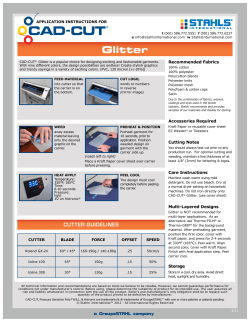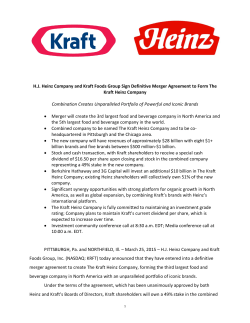
Solution Guide to Sample Test
Professor Robert A. Miller
Carnegie Mellon University
Strategic Corporate Management
45-870 Sample Test
Solution Guide to Sample Test
NEAT HANDWRITTEN INDIVIDUAL WORK PLEASE.
There are six questions. This test is graded out of 60 points, 10 points per question, and
then we divide by 2. Write your answers on the question page and use the back of the
previous page if you need more space (for diagrams and calculations; please clearly show
your work). Some questions are easier than others to answer, but each one is worth 5
points.
PLEASE WRITE YOUR NAME HERE:
____________________________________
Question 1
Here is what the class played. For each player (Boeing, Airbus and Rolls Royce):
(a) In terms of relative frequencies, what is the (mixed) strategy of the class?
(b) What is the expected payoff from playing the class strategy in this game?
(c) What is the best response to the empirical distribution generated by the class?
(d) What is the net gain from playing the playing the best response to the empirical
distribution relative to the class strategy?
Answer:
(a) Boeing (1 point):
play “Do not invest” with probability (0+0+1+3)/21=4/21, and
play “Modify and increase capacity” with probability (0+7+0+10)/21=17/21.
RR (1 point):
play “Postpone” with probability (0+1+0+0)/21=1/21, and
play “Develop” with probability (0+3+7+10)/21=20/21.
Airbus (1 point):
Play ”Do not build” with probability (0+0+0+7)/21=1/3, and
play “Build” with probability (1+3+0+10)/21=2/3.
(b) (1 point)
Expected payoff
(c) Given the empirical distribution:
(1) (1 point)
Boeing’s payoff from playing “Do not invest” is
0*0/(1+3) + 0*0/4 + (-2)*1/4 + (-3)*3/4 = -11/4
Similarly, Boeing’s payoff from playing “Modify and increase capacity” is
4*7/(0+0+7+10) + (-5)*10/17 = -22/17 > -11/4
So Boeing’s best response to the empirical distribution is “Modify and increase
capacity”.
(2) (1 point)
RR’s payoff from playing “Postpone” is
3*1/(1+0+0+0) = 3
RR’s payoff from playing “Develop” is
3*7/(0+3+7+10) + 5*3/20 + 8*10/20 = 116/20 > 3
So RR’s best response to the empirical distribution is “Develop”
(3) (1 point)
Airbus’s payoff from playing”Do not build” is
3*7/(0+0+0+7) = 3
Airbus’s payoff from playing”Build” is
3*1/(1+3+0+10) + 5*3/14 + 8*10/14 = 98/14 > 3
So Airbus’s best response to the empirical distribution is “Build”
(d) Net gain from playing the strategy selected in (c) instead of the mixed strategy specified
in (a) for each player is the difference between his expected payoff in (b) and payoff from
playing the corresponding best response in (c).
Boeing: (-22/17) - (-34/21) = 116/357 = 0.325 (1 point)
RR:
(116/20) - (119/21) = 56/420 = 0.133 (1 point)
Airbus: (98/14) - (22/21)
= 250/42 = 5.952 (1 point)
Question 2
Illustrate the following concepts in a strategic form game for two players where each player
has two strategies (that is a matrix game with two rows and two columns). For each part draw
a matrix game (with strategies left, right and up down), make up payoffs, and then draw in
arrows (and every person should have different payoff because this is individual work) to
show what happens when:
(a) Both players have dominant strategies. Explain why this game can be solved without
knowing the empirical distribution.
(b) One player has a dominant strategy, and the other player does not. Explain how the
game is solved using the principle of iterated dominance.
(c) Neither have a dominant strategy. Draw two diagrams in this case, and explain why
there are either two pure strategy Nash equilibriums, or none at all.
Answer:
(a) 3 points
A’s dominant strategy is “Right” and B’s dominant strategy is “Down”. Because no
matter B plays “Up” or “Down”, A is always better off by playing “Right” (2 > 1 if B
plays “Up” and 1 > 0 if B plays “Down”), A’s best response is “Right” regardless the
empirical distribution. Same argument applies to B.
(b) 3 points
A always plays ”Right” because it is A’s dominant strategy. Given A has chosen
“Right”, B’s best response is “Up” (0 > -1)
(c) 2 points: In the first case, there are two pure strategy Nash equilibriums, i.e. {A plays
“Right”, B plays “Up”} and {A plays “Left”, B plays “down”}
2 points: In the second case, there is no pure strategy Nash equilibrium.
Question 3
Who enters first might make a difference. In the following three panels we investigate an
entry game between two producers.
Diagram A
In Diagram A, the large producer moves first, perhaps because it commits earlier, and
requires a longer start up time. Solve the game to obtain a prediction about which firm or
firms enter. (Use the blank page that is the back of Question 3 to answer this question.)
Answer: Using backwards induction: large increases but small does not. (3.5 points)
Diagram B
In Diagram B, the small firm makes the first move, perhaps because it is more flexible. Solve
the game to obtain a prediction about which firm or firms enter.
Answer: Using backwards induction: small increases but large does not. (3.5 points)
Diagram C
In Diagram C, both firms move without knowing what the other firm has done. Identify all
the Nash equilibrium (both pure and mixed). What does theory predict in this case?
Answer:
(1 point) There are two pure strategy equilibrium identified by showing Y for both
players in the cells above, i.e. (Large increase, Small retain), and (Small increase, Large
retain).
(1 point) To solve the mixed strategy, let Large plays “increase” with probability p and
“retain” with 1-p. Also, let Small plays “increase” with probability q and “retain” with 1q.
Given the mixed strategy of Large, Small is indifferent between “increase” and “retain”,
i.e. the expected payoffs of Small are the same from its two options given that Large
plays “increase” with probability p and “retain” with 1-p.
Solve 5p + 16(1-p) = 7p + 10(1-p), we get p=0.75.
Similarly, given the mixed strategy of Small, Large is indifferent between “increase” and
“retain”, i.e. the expected payoffs of Large are the same from its two options given that
small plays “increase” with probability q and “retain” with 1-q.
Solve 10q + 25(1-q) = 15q + 20(1-q), we get q=0.5.
(1 point) Theory is not very helpful because it doesn’t explain how the equilibrium is
selected
Question 4
Write down the strategic form of this extensive form game using a matrix representation:
Draw your matrix representation (complete with labeled strategies and cell payoffs) in the
space below. Then solve the strategic form of the game using the principle of iterated
dominance.
Answer:
The strategic form looks like: (7 points)
Solve the strategic form (3 points):
A dominated strategy to be eliminated is “go on strike, continue on strike”. Eliminating that
strategy, and/or eliminating “continue to de-unionize, continue to de-unionize”, then reduces
the game to one which is dominance solvable. Procedures is as follows.
Question 5
Kraft values Cadbury’s at 4 while Hershey’s values Cadbury’s at 3. As a stand alone
company Cadbury’s is valued at 2. Everyone knows this. Consider a first price auction in
which Kraft and Hershey’s tender their respective sealed bid offers, which for simplicity are
in whole numbers between 1 and 5. (For example Kraft might bid 5 and Hershey’s might bid
3 in which case Cadbury’s is sold for 5 to Kraft, who then makes a net loss of 1. If there is a
tie, both potential acquirers bidding the same number, a fair coin is tossed to determine the
winner of the auction.)
(a) Write down the simultaneous move game that represents this first price auction.
(b) Solve the simultaneous move game you have written down.
Show your work here (and on the adjacent blank page if necessary).
Answer:
(a) (6 points)
(b) (4 points)
First, Hershey’s bidding 3 or more is dominated by bidding 2. Second, Kraft bidding 4 or
more is dominated by bidding 3. Third, Kraft bidding 1 is dominated by bidding 2.
Eliminating all those dominated strategies we are left with a 2 by 2 matrix in which Kraft
bids 2 or 3 and Hershey’s bids 1 or 2.
In the reduced game Hershey’s has a dominant strategy to bid 2. However Kraft is indifferent
between bidding 2 or 3. Thus Hershey’s bids 2 and Kraft bids 2 (winning the auction half the
time) or 3 (winning the auction for sure).
© Copyright 2025





















